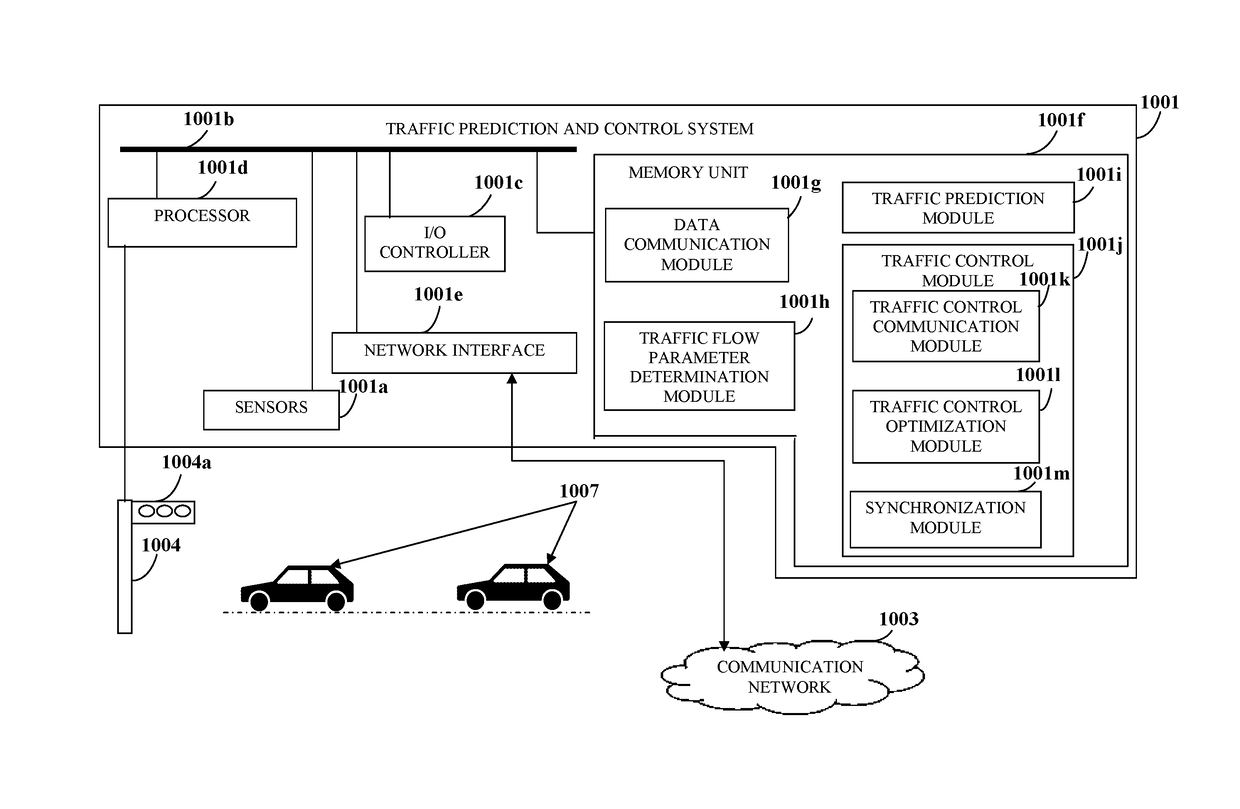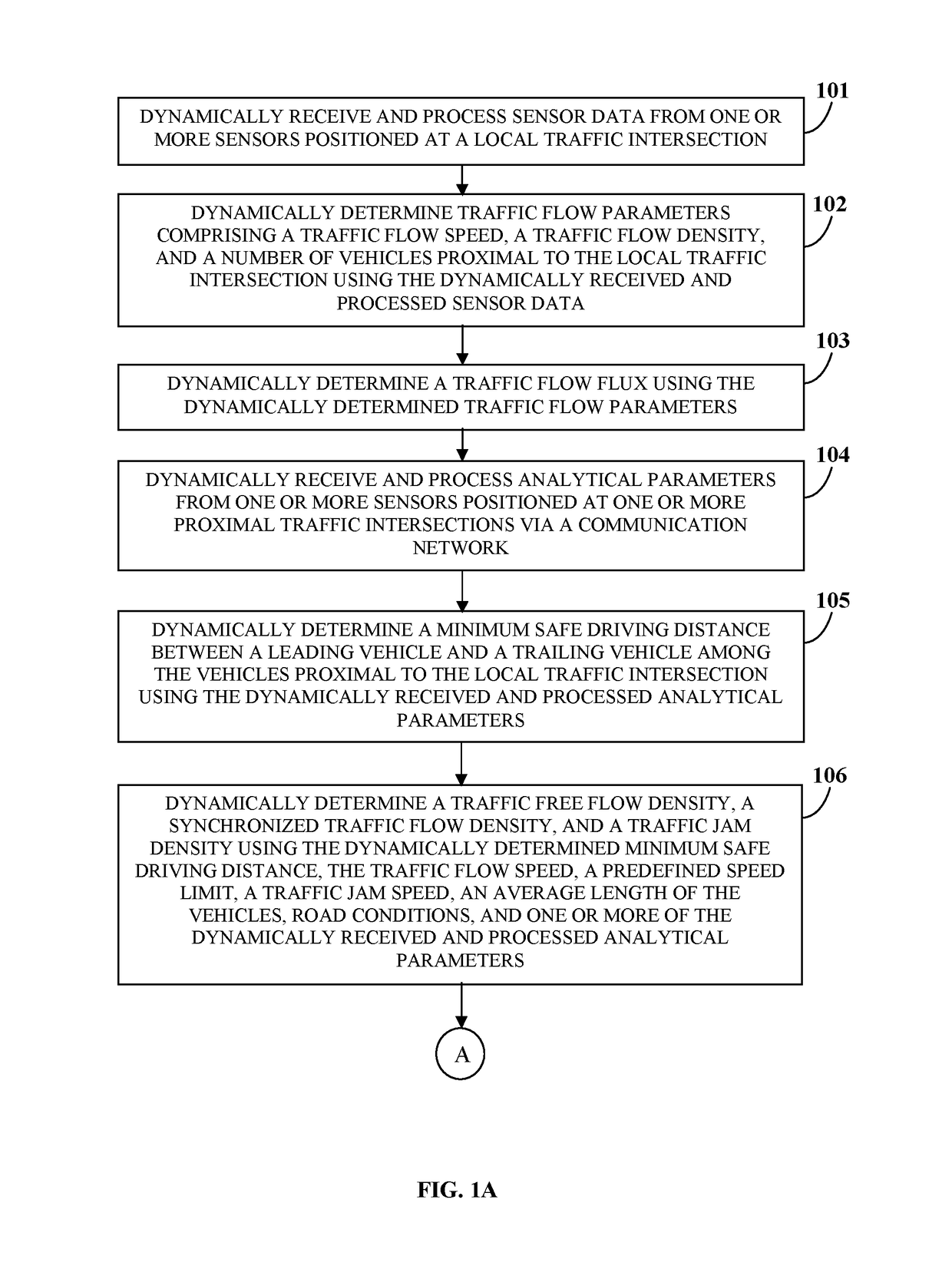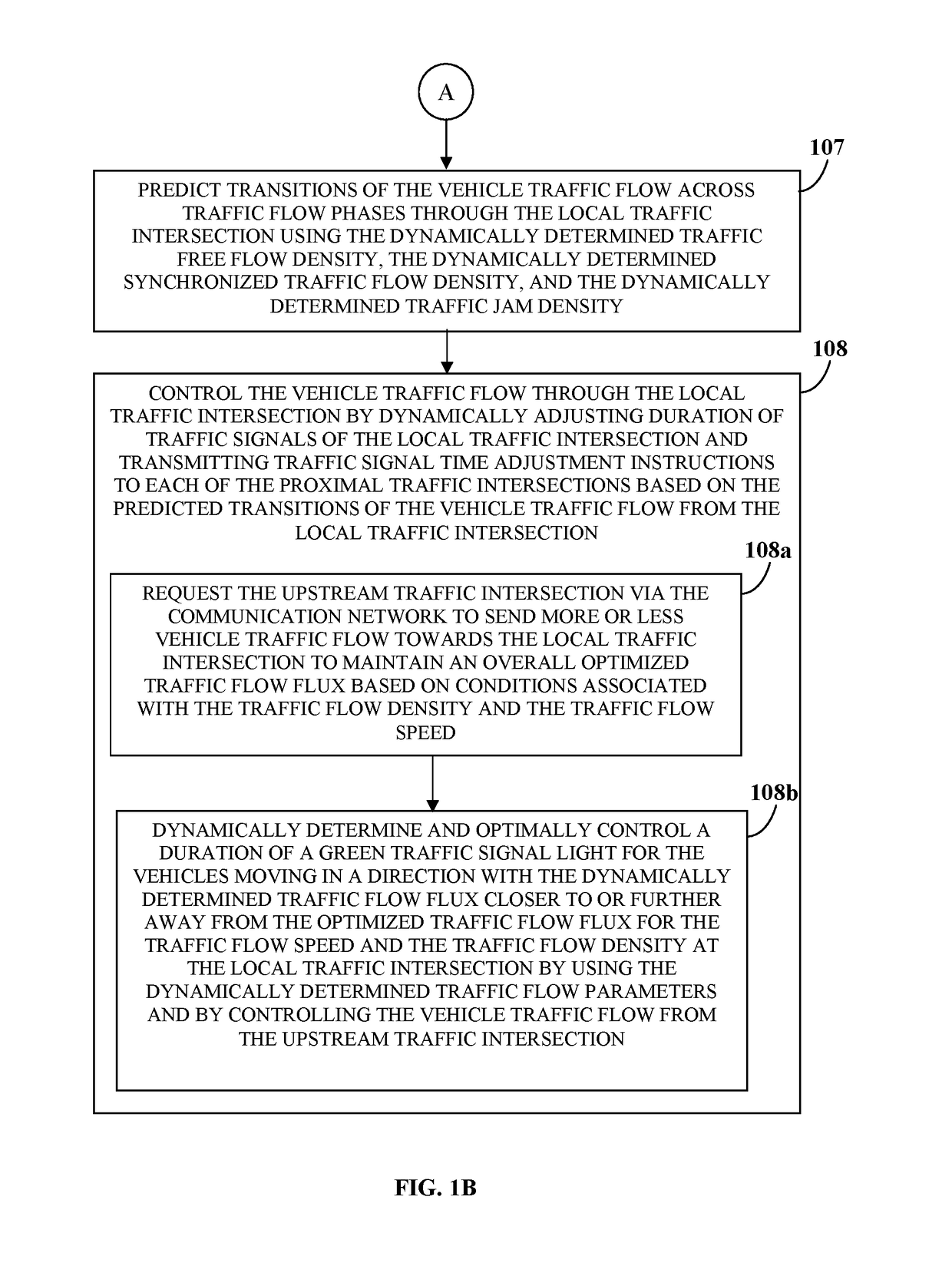Traffic prediction and control system for vehicle traffic flows at traffic intersections
- Summary
- Abstract
- Description
- Claims
- Application Information
AI Technical Summary
Benefits of technology
Problems solved by technology
Method used
Image
Examples
Embodiment Construction
[0026]The method and the traffic prediction and control system (TPCS) disclosed herein implement the following approaches. In a first approach, individual drivers act locally and sequentially towards concerted global actions, resulting in optimized travel efficiency and traffic throughput across a road network. As used herein, “traffic throughput” refers to an integral of traffic flow flux over time. Also, as used herein, “traffic flow flux” refers to a number of vehicles moving towards a traffic intersection per unit time. In a second approach, individual preprogrammed control of traffic signal lights is shifted towards a real time concerted global traffic signal light control in all directions at a traffic intersection and neighboring or proximal traffic intersections, resulting in optimized travel efficiency and traffic throughput across a road network. The first approach requires each traffic intersection and each and every vehicle to possess a wireless communications and contro...
PUM
 Login to View More
Login to View More Abstract
Description
Claims
Application Information
 Login to View More
Login to View More - R&D
- Intellectual Property
- Life Sciences
- Materials
- Tech Scout
- Unparalleled Data Quality
- Higher Quality Content
- 60% Fewer Hallucinations
Browse by: Latest US Patents, China's latest patents, Technical Efficacy Thesaurus, Application Domain, Technology Topic, Popular Technical Reports.
© 2025 PatSnap. All rights reserved.Legal|Privacy policy|Modern Slavery Act Transparency Statement|Sitemap|About US| Contact US: help@patsnap.com



